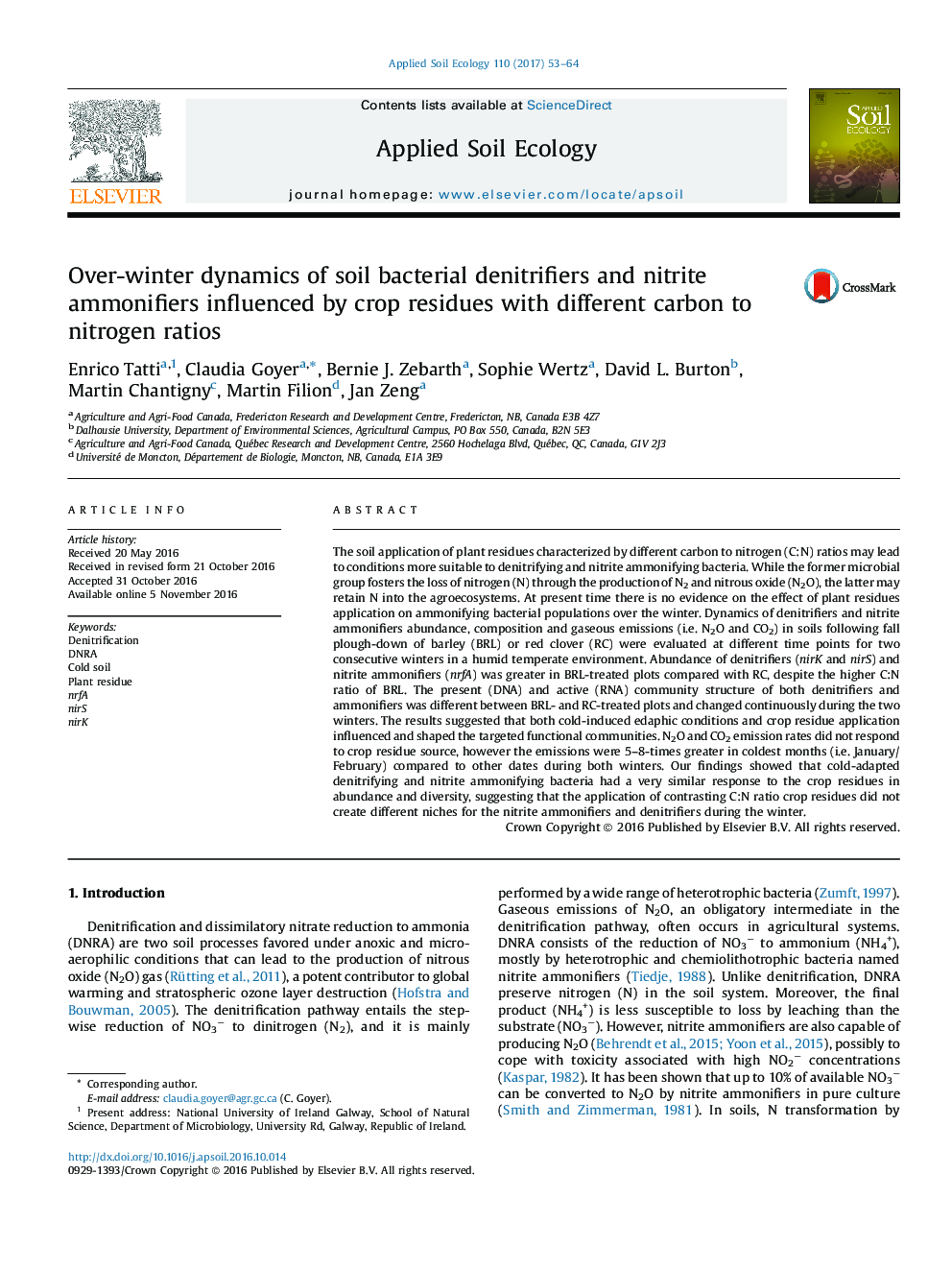| کد مقاله | کد نشریه | سال انتشار | مقاله انگلیسی | نسخه تمام متن |
|---|---|---|---|---|
| 5742772 | 1617773 | 2017 | 12 صفحه PDF | دانلود رایگان |
- Soil communities were studied over-winter after barley and red clover plough down.
- Greater abundances were observed in barley-treated plots compared to red clover.
- Crop residues and time changed diversity of active and present communities.
- Communities responded similarly to residues despite their contrasting C:N ratios.
- Nitrous oxide emissions were greater in coldest months, irrespectively of crops.
The soil application of plant residues characterized by different carbon to nitrogen (C:N) ratios may lead to conditions more suitable to denitrifying and nitrite ammonifying bacteria. While the former microbial group fosters the loss of nitrogen (N) through the production of N2 and nitrous oxide (N2O), the latter may retain N into the agroecosystems. At present time there is no evidence on the effect of plant residues application on ammonifying bacterial populations over the winter. Dynamics of denitrifiers and nitrite ammonifiers abundance, composition and gaseous emissions (i.e. N2O and CO2) in soils following fall plough-down of barley (BRL) or red clover (RC) were evaluated at different time points for two consecutive winters in a humid temperate environment. Abundance of denitrifiers (nirK and nirS) and nitrite ammonifiers (nrfA) was greater in BRL-treated plots compared with RC, despite the higher C:N ratio of BRL. The present (DNA) and active (RNA) community structure of both denitrifiers and ammonifiers was different between BRL- and RC-treated plots and changed continuously during the two winters. The results suggested that both cold-induced edaphic conditions and crop residue application influenced and shaped the targeted functional communities. N2O and CO2 emission rates did not respond to crop residue source, however the emissions were 5-8-times greater in coldest months (i.e. January/February) compared to other dates during both winters. Our findings showed that cold-adapted denitrifying and nitrite ammonifying bacteria had a very similar response to the crop residues in abundance and diversity, suggesting that the application of contrasting C:N ratio crop residues did not create different niches for the nitrite ammonifiers and denitrifiers during the winter.
Journal: Applied Soil Ecology - Volume 110, February 2017, Pages 53-64
